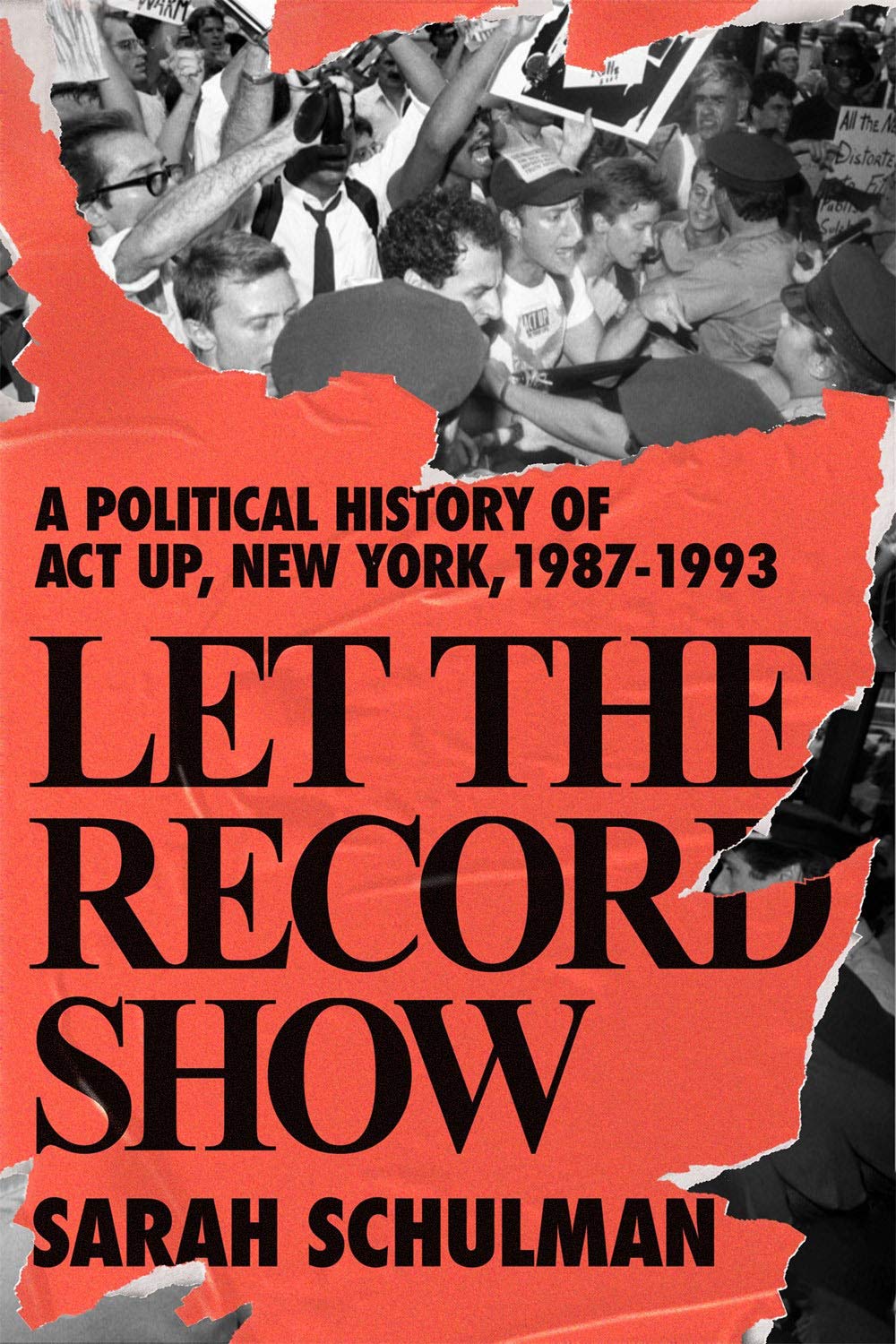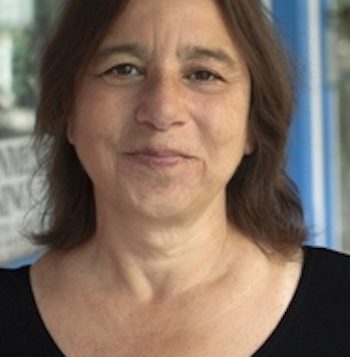 LET THE RECORD SHOW
LET THE RECORD SHOW
A Political History of ACT UP New York, 1987–1993
by Sarah Schulman
Farrar, Strauss and Giroux. 736 pages, $40.
BEST KNOWN as a prolific novelist and playwright, Sarah Schulman is also an AIDS historian who was active in the early years of ACT UP. In 1992, she instigated the Lesbian Avengers with several other women. In 2001, she and Jim Hubbard created the ACT UP Oral History Project, interviewing 188 surviving members, which is archived online (at actuporalhistory.org). Her latest book, Let the Record Show, draws extensively from the Oral History interviews as well as her own experiences in ACT UP New York. This is her fifth nonfiction book with significant AIDS content, and her scholarship is revelatory.
Founded in 1987 after a ferocious speech by Larry Kramer during a lecture at Manhattan’s Gay and Lesbian Center, ACT UP (AIDS Coalition to Unleash Power) defined itself as “a non-partisan, diverse group of individuals united in anger, and committed to direct action to end the AIDS crisis.”
While ACT UP New York continues today, Schulman focuses on its first six years, from its beginnings in 1987 through the splintering off of treatment and housing subgroups wanting to professionalize. Remarkably, in this short time these rag-tag grassroots activists, along with other nascent ACT UP affiliates nationwide, effected profound changes: fast-tracking clinical trials; modifying the CDC definition of AIDS to include women; ending insurance exclusions; easing immigration restrictions; legalizing needle exchange programs; developing housing for homeless people with hiv/aids; and transforming mainstream images of AIDS from victimhood to strength and resiliency.

ACT UP’s decentralized structure allowed members to work on multiple fronts simultaneously. The Women’s Committee focused on advocacy for women, treatment and data on testing, protocols, and distribution of drugs. The Latino Caucus jump-started a much needed chapter in Puerto Rico. Housing, immigration, and needle exchange advocates self-organized as well. Members often participated in multiple committees and then banded together to support each other’s activities.
Activists worked both inside and outside the system, some cooperating with government, media, and pharmaceutical companies, others organizing confrontational “zaps” and demonstrations. Some members met with Anthony Fauci, then director of the National Institutes of Allergic and Infectious Diseases, while others outside demanded more from the organization and its leaders.
Ingenious street actions are gloriously detailed in this encyclopedic book, enlivened by first-person narratives of interventions on Wall Street, the Food and Drug Administration, the National Institute of Health, St. Patrick’s Cathedral, Trump Tower, Grand Central Station, Macy’s, the White House, television newscasts, public street funerals, and other events. Supporting these efforts was a phalanx of volunteer logistics coordinators and lawyers, civil disobedience trainers to keep people safe and media trainers to achieve maximum impact.
Artists were central to the theatricality of the protests. Memories of Keith Haring, David Wojnarowicz, Ray Navarro, Assotto Saint, and Michael Callen are interwoven throughout the book. Gran Fury, DIVA TV, and Testing the Limits collectives created agitprop imagery. Well-known media makers such as Todd Haynes, Catherine Gund, Ira Sachs, and Christine Vachon found their voices here.
By integrating quoted material from her ACT UP Oral History Project, Schulman viscerally illustrates the fear, frustration, despair, and anger that fueled ACT UP’s momentum. People were fighting for their lives, caring for each other, and raging into the night. Some were giddy with delight when reflecting upon their younger radical selves, while others were still saddened by the racism and misogyny they experienced. For those who were gone too soon, Schulman intersperses elegiac testimonies, adding names and exploits to this retelling of their lives.
Schulman states at the outset that her primary purpose in writing Let the Record Show “is not nostalgia, but rather to help contemporary and future activists learn from the past to assist organizing in the present” and to show “that people from all walks of life, working together, can change the world.”
John R. Killacky, a longtime contributor to this magazine, is serving in his second term as an elected legislator in the Vermont House of Representatives.






